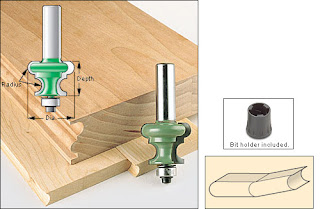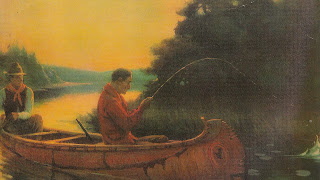Up until this point it hasn't really felt like I've done anything that is making a canoe. Even though machining the forms is still more preparatory work, it does very much show the shape of what is to come. Because my boss is so awesome, he volunteered to take my PDF files of the canoe forms, transfer them on his computer into code for the CNC, and we got the CNC to cut out my forms. This saved me a lot of work and headache. This way I knew that my forms were accurate down to thousands of an inch.
I set up the strong back that was lent to me for the winter. Thanks Pastor Ron. Because my canoe has to be shorter than the 16' the drawings call for, I set the mold stations 11 3/8" instead of the 12".
While buying the baltic birch plywood i used for the station molds , I came across this piece of red oak for the seats and yolk in a dumpster. after asking the guys I was buying the wood from if i could take it, they said "yes" and here i have , quite a suitable, piece of oak for my canoe at no cost! Yes, there is a large check in the board, but as i'm cutting into strips it doesn't matter much The baltic birch cost me around $85 for 3 sheets of 1/2" One of the reasons i went for the more expensive baltic birch plywood is that it came in 5'x5' sheets. this is the size of the table on the CNC. So whatever station molds I could program into the CNC it would be able to use on the whole sheet of plywood.
Once the station molds were cut out I just had to screw them to the strong back. Extra care had to be taken here to ensure that everything was square, plumb, and straight. Once everything was set I could really see the shape of things to come,
Once the mold was set up I could start setting the strips. This was what i've been waiting for. This was the canoe itself being built now. I'm using the hot glue gun method. This means, using a hot glue gun, I glue the strips to the forms instead of using clamps and blocks. I'm doing it this way because i've seen it work, and I don't have all the expensive clamps. I use the cabinetmakers favourite trick of masking tape between the stations to get the pressure needed for a tight glue joint. I also found some small diameter air hose to use to protect the sharp edges of the cove side of the strips while taping. Masking tape stretches and this elasticity allows it to hold the strips tight to each other. But you do use a lot of it. I figure i'll use 8 rolls of the stuff before i'm done.
I couldn't decide for the longest time what to do for an accent strip. I was gonna do something fancy with light and dark woods, but decided to just get 2 dark cedar strips and use those. Simple is just better sometimes. If i make the second canoe, i might do something different there, but for this one, 2 dark strips will be all I use. I do have plans to add some detail on other parts of the canoe. It's quite something to see the hull start to take shape.

















